Gil Kane for Buitoni? Neal Adams for the Air Force? Gene Colan for the telephone company? Dig these and more…
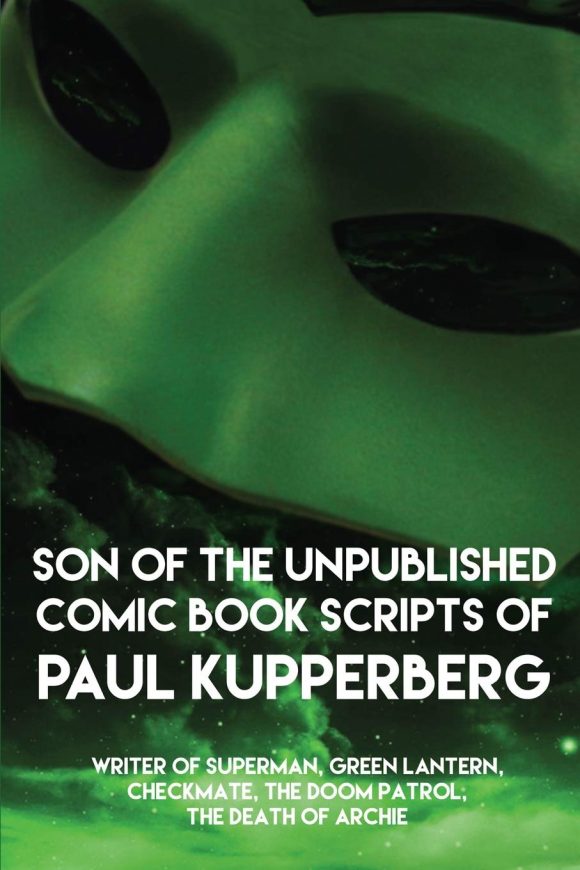
—
UPDATED 4/19/24: Diggin’ in the vault time — when we go deep into the recesses of the shadowy subterranean 13th Dimension headquarters for great columns that deserve another look. Just for kicks! This one first ran in April 2021. Right on! — Dan
—
Hey, folks! The celebrated Mr. K’s new book is now available at Amazon — Son of the Unpublished Comic Book Scripts of Paul Kupperberg, collecting scripts for Green Lantern, Batman: The Brave and the Bold, Elongated Man and more. Click here to order; it’s $16. Or you can get a signed and personalized copy directly from Paul via PayPal.Me/PaulKupperberg for $19 US or $30 Canadian. Groovy. — Dan
—
By PAUL KUPPERBERG
It’s well known that comic book artists have long lent their talents to the advertising trade; in the 1940s, Captain Marvel artist C.C. Beck created the Captain Marvelish clone, Captain Tootise to sell Tootise Rolls and Tootsie Pops in comic books and in the 1960s, Golden Age Green Lantern co-creator Martin Nodell famously (post-comic book career) co-created an even more recognizable and tastier pop culture figure, Poppin’ Fresh, aka the Pillsbury Doughboy. (Tee-hee!)
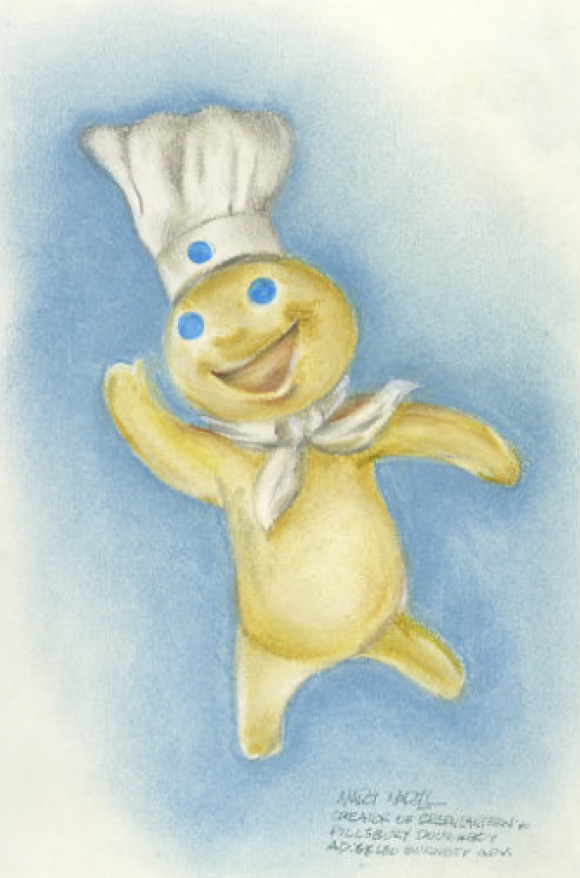
The source for many of the early comic-book style ads was the advertising agency Johnstone & Cushing under the supervision of art director (and often copywriter) Al Stenzel. Bob LeRose, who would later become one of DC Comics’ top colorists and head of cover production, began his career as a production artist at J&C, which I wrote about in a 1978 DC Profile of Bob:
“After finishing school (…) Bob landed a position as Assistant Production Manager at Johnstone & Cushing, an advertising agency specializing in comic ads. Bob’s immediate superior at the agency was Al Stenzel, the man in charge of producing ads in the form of comics… (with such) legendary comics folk as Lou Fine, Leonard Starr, and Creig Flessel.
“It was in 1960 that Al Stenzel left Johnstone & Cushing to set up his own studio, taking Bob along as his right-hand man. Working alongside the man he calls ‘the Toscanini of comics’ taught Bob virtually everything he knows about the production and business of comics. The following year, Stenzel’s studio began producing the comics section for Boys’ Life, the official magazine of the Boy Scouts. And, as the studio’s production manager, Bob gave a young artist named Neal Adams his first commercial comics assignment.”
There was what seemed like a sudden surge of comic-book artists popping up in mainstream advertising in the 1970s, several examples of which I clipped from newspapers and magazines and include here with MY 13 FAVORITE MAINSTREAM ADS BY COMIC BOOK ARTISTS.
In no particular order:
—
Buitoni Spaghetti Sauce by Gil Kane (1970). Mama mia! Not a single up-the-nostril shot in sight, but even without his signature (a rarity in advertising art), there’s no way this comic book fan reading The New York Post in 1970 could have missed this priceless piece of Gil Kane art.

—
Lincoln Center Out-of-Doors by Sergio Aragones (1974). You say opera and symphony, I think Sergio Aragones! Of course, if you want a scene crammed full of dozens of teeny-tiny people, all engaged in some activity and each an itsy-bitsy individual, who you gonna get but Mad’s most marginal artist?
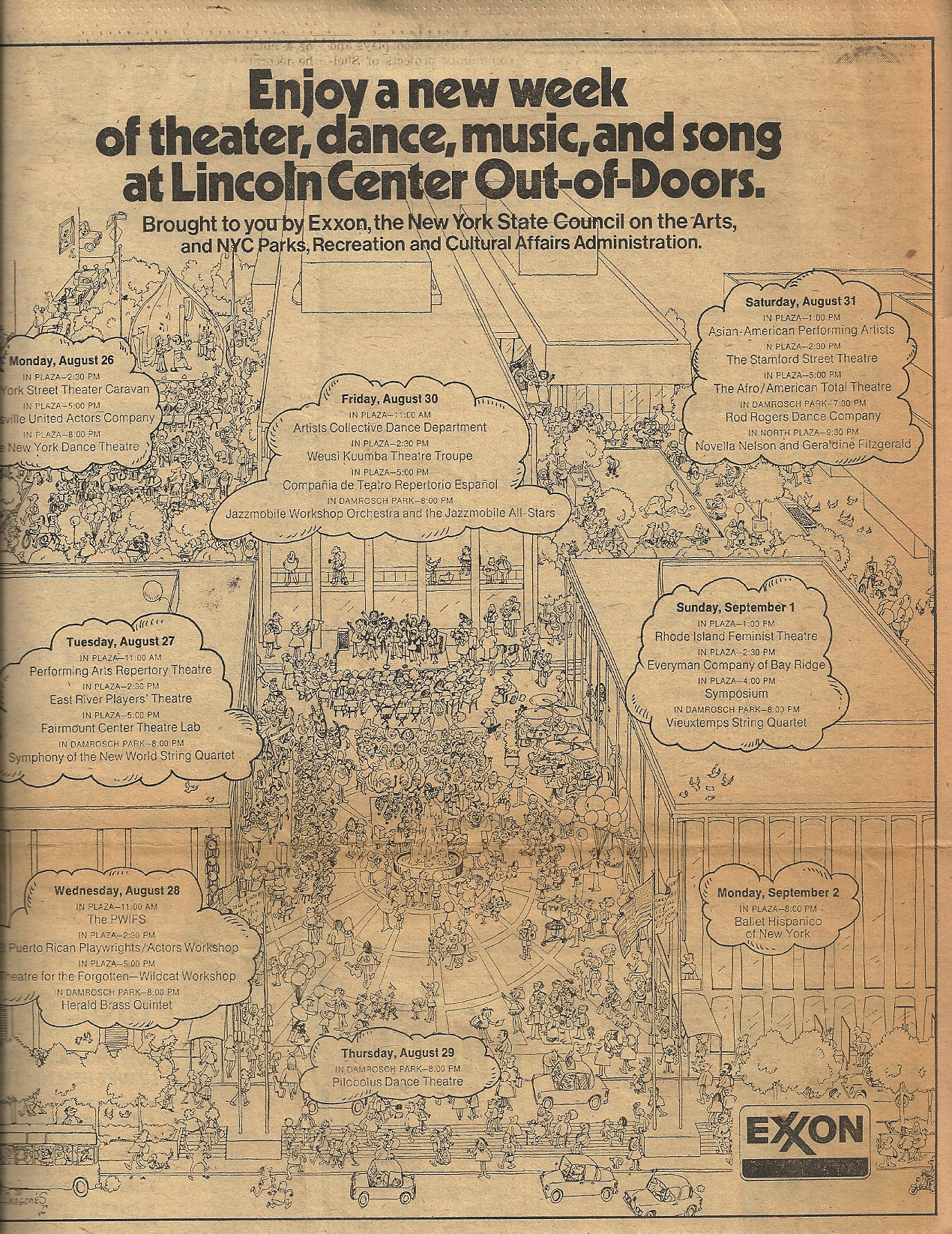
—
Pursettes Tampons by Mort Drucker (1974). Another legendary Mad man, Drucker was probably one of the most in-demand comics artists in advertising. I think it’s safe to say there wasn’t a product category that he didn’t, at some point in his long and (ahem!) illustrious career, work on.
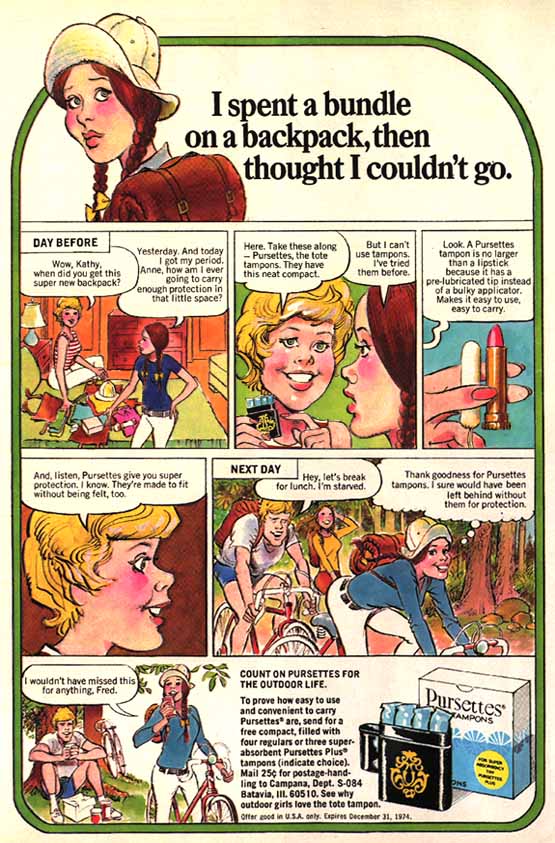
—
Michelob Light by Jack Davis (1985). Another Mad magazine stalwart whose work was best known to the world through his advertising art was the unmatchable Jack Davis. Back when he was drawing war stories for the legendary EC Comics, Davis was known for his meticulous attention to detail, a trait that advertisers must have loved, and which showed through in even the silliest of ad campaigns.
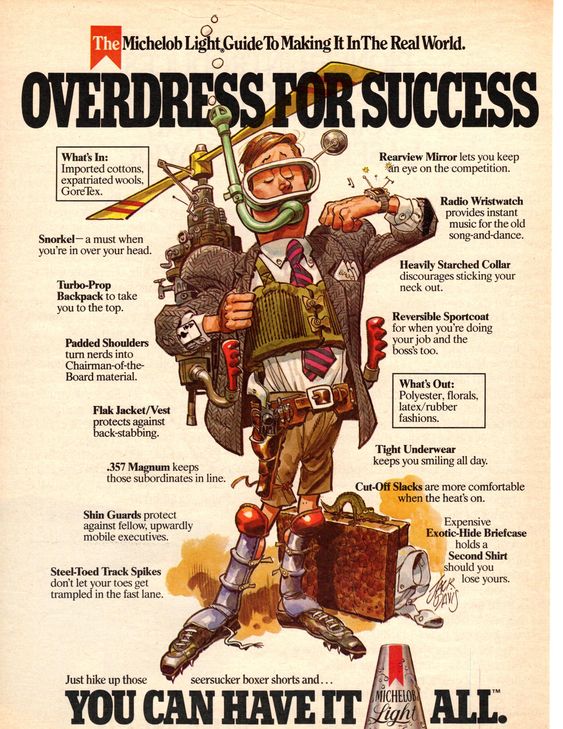
—
U.S. Air Force Academy by Neal Adams (1972). Maybe Frank Miller was right after all! Maybe Superman was just a tool of the fascist government! 1972 was a weird time to have Superman shilling for the military, seeing as how so much of the comic book readership was of draft age. Thanks to his time at Johnstone & Cushing and later experience through his own studio Continuity Associates, Neal, along with Drucker and Davis, has one of the most extensive advertising portfolios in the business. A side note; I always wondered why the Air Force chose an image of a running Superman over a flying pose.
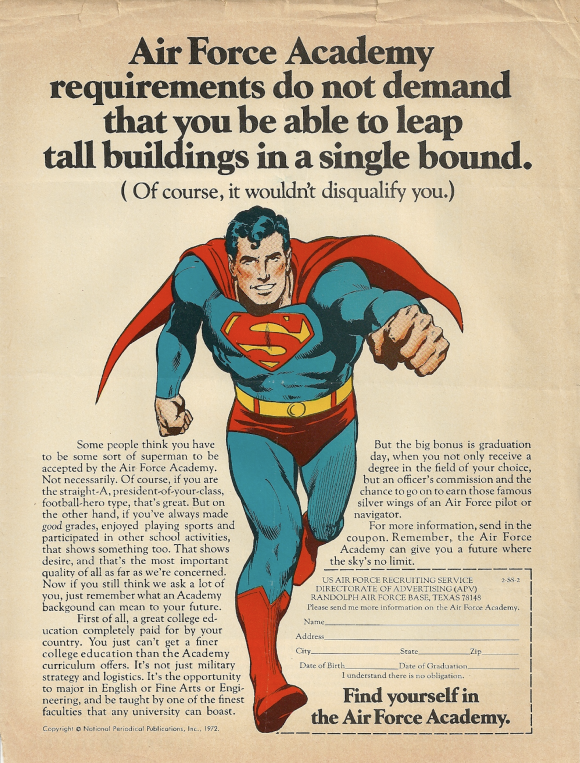
—
Continental Insurance Company (Artist unknown, 1972). No idea who the artist is for this ad, but the inclusion of five different comics licensed elements from five separate licensees makes it worth an honorable mention. I can’t imagine the hoops the ad agency behind this had to jump through to get the permissions, which also makes me wonder why they didn’t go the extra step of getting a real comic book artist instead of an agency artist doing weird, stylized light-boxed versions of other people’s art.
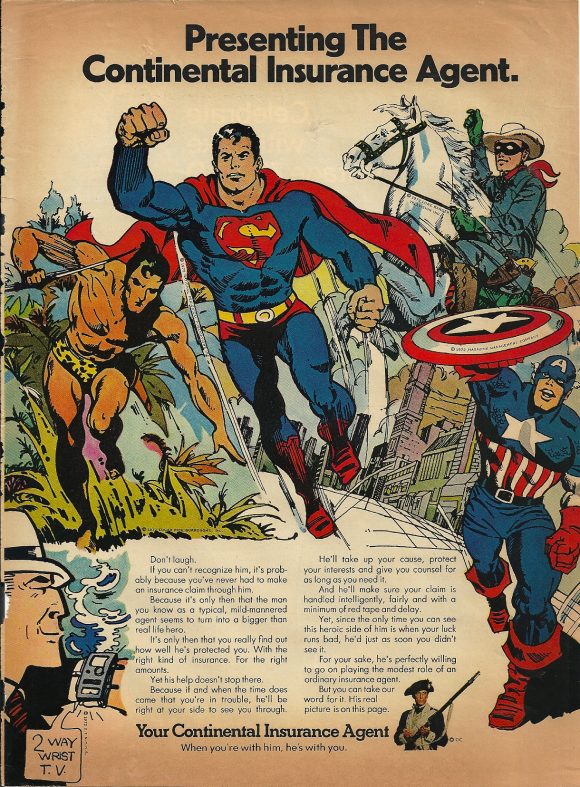
—
New York Telephone Phone-Power by Gene Colan (1975). Like Kane and Sergio, Gene Colan isn’t an artist usually associated with advertising, but this piece popped up in 1975 in an ad for TCP (The Phone Company; please see, The President’s Analyst) selling telephone solicitation training to its business-customer base. Thanks, Gene!
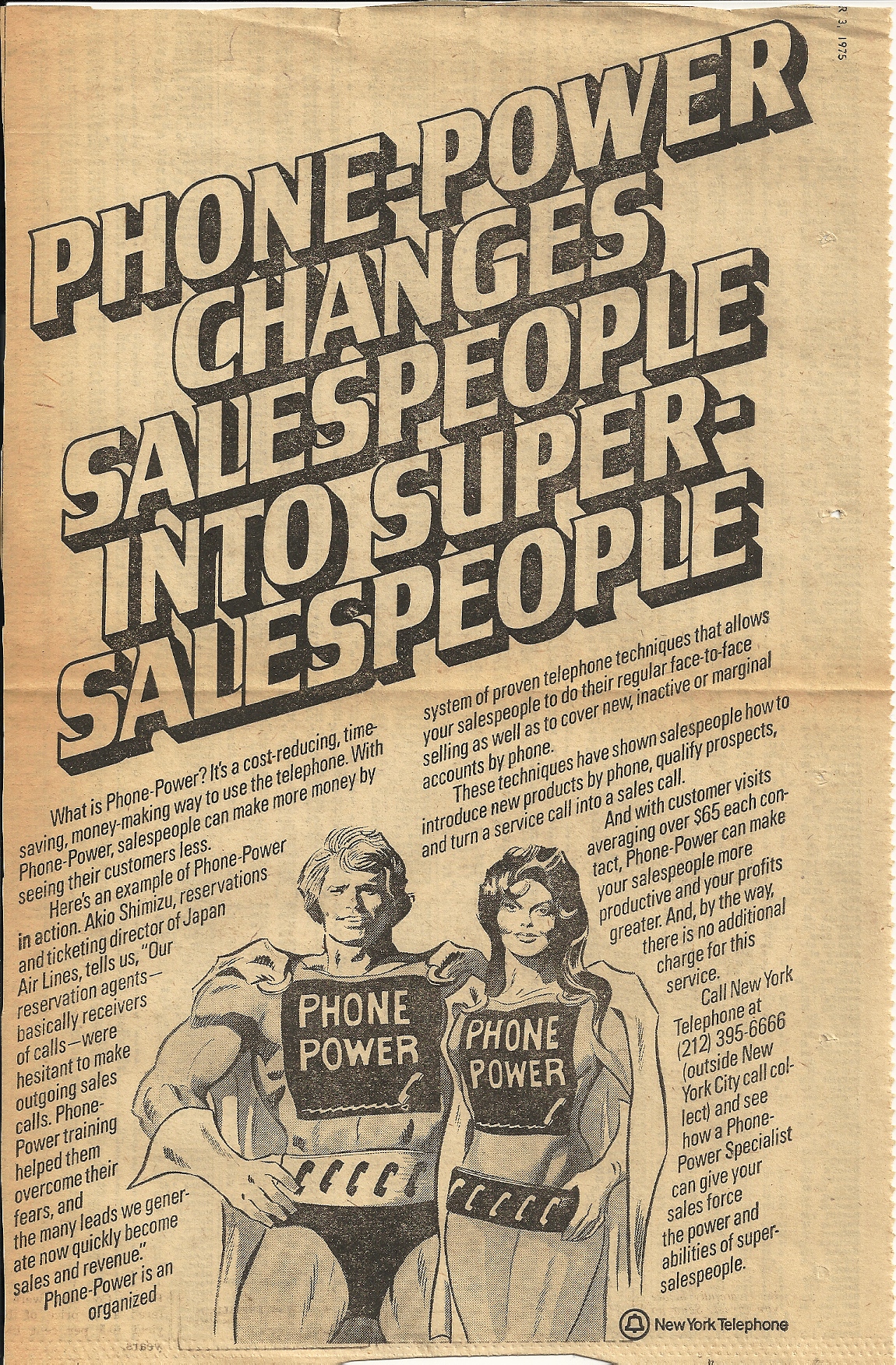
—
Pepsi Layout by Mort Meskin (1960s). A little stroll down memory lane, with a Pepsi ad layout by the legendary Mort Meskin, post-comics, when he worked as a commercial illustrator and storyboard artist for the BBD&O advertising agency (1965-1982). Meskin was an artist’s artist, the guy the other guys looked at to see how it was done, and he maintained that same sense of energy and dynamism in his ad work, even in the comparatively sparse rendering style of a storyboard.
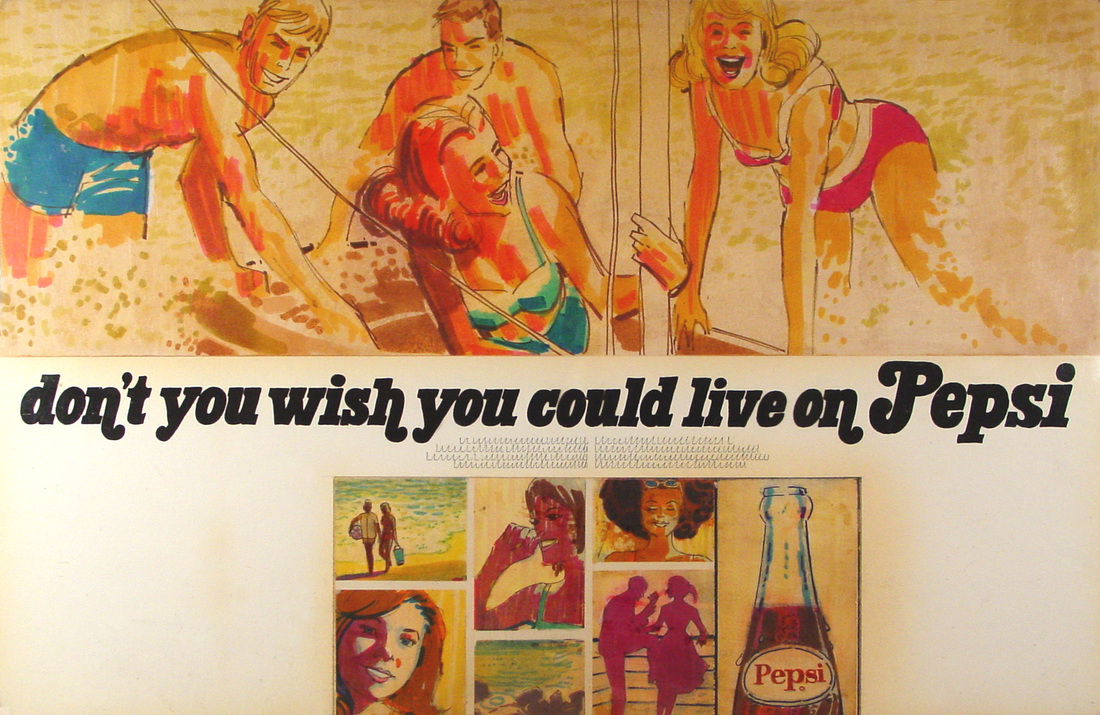
—
Philip Morris Cigarettes by Lou Fine (1950s). First of all: Hey, kids — don’t smoke! OK, so, another Golden Age great who made the move to advertising was Lou Fine, who was a mainstay at the aforementioned Johnstone & Cushing agency. Here he shows why he deserved his reputation by cramming a whole lot of information into a small space with ease, including a nice perspective shot in the first panel.

—
Captain Tootsie by C.C. Beck (1945). I mentioned C.C. Beck’s Captain Tootise earlier and even though these ads were created to run in comic books, it’s worthy of inclusion. Not only did Captain Tootsie have his own title for a while, but the character also starred in a long running series of newspaper ads in the 1950s designed to look like daily and Sunday newspaper strips.
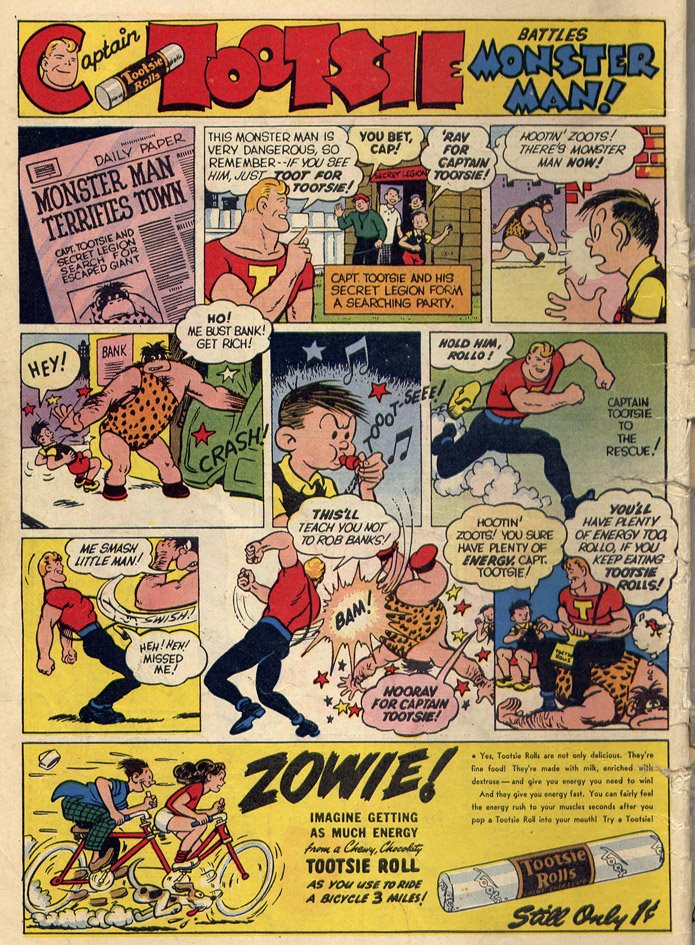
—
Adventures in the G.I. Joe Club With Andy & George by Irv Novick (1964). The 12-inch G.I. Joe was introduced in 1963, the first toy of its kind for boys (Hasbro’s genius? sticking a gun in a doll’s hand and rebranding it an “action figure”!). Eight-year-old me wanted a Joe more than anything else in the world that year, a wish that was granted, albeit through trial and tribulation, that Chanukah. (For the story of that childhood infatuation, or if you’re a Joe enthusiast like me, check out The Joy of Joe, a collection of essays, starting with mine, about Joe through the decades.) This series of black and white ads for G.I. Joe started running on the inside covers of some of the DC titles, tantalizing glimpses of all the cool accessories I’d never be able to afford, beautifully drawn by war comics veteran Irv Novick.
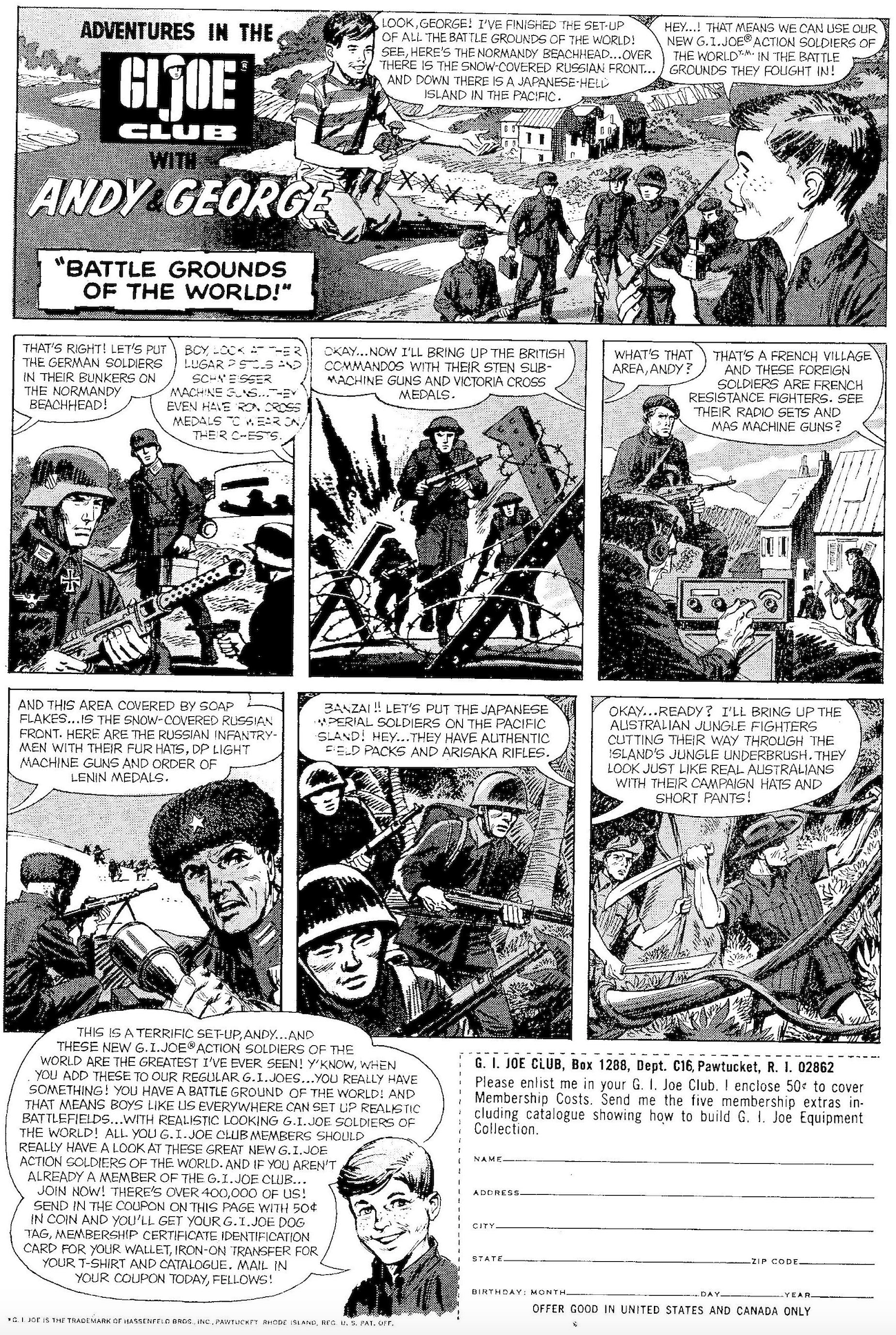
—
Popov Vodka by Neal Adams (1974). I’m going to double-dip on Neal Adams with this 1974 vodka ad because… well, c’mon. Look at it!

—
Lipton Tea by Dik Browne (1951). Hagar the Horrible creator and Hi and Lois co-creator Dik Browne made the move from advertising (in the 1940s and early 1950s) to comic strips, learning his trade on ads that were, like the Captain Tootsie strips, designed to run and blend into newspaper comics sections. Reproduction of this strip in no way implies my approval of Arthur Godfrey.
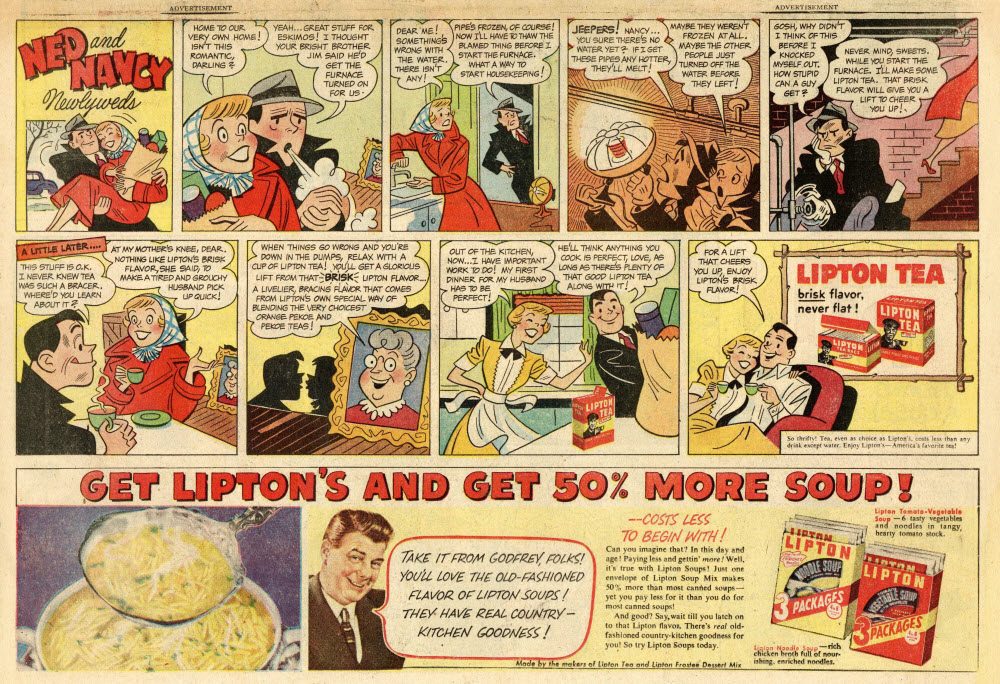
—
MORE
— PAUL KUPPERBERG: My 13 Favorite 1960s Gold Key Comics TV Adaptations. Click here.
— PAUL KUPPERBERG: My 13 Favorite 1960s DC COMICS FAN PAGES. Click here.
—
Paul Kupperberg has been writing comic books from Archie to Zatanna for 45 years at DC, Archie, Charlton, Marvel, Bongo and others. He is also the author of Paul Kupperberg’s Illustrated Guide to Writing Comics (Charlton Neo Press); I Never Write for the Money… But I Always Turn in the Manuscript for a Check (Comics Career); the comic book industry-based murder mystery The Same Old Story, the short-story collection In My Shorts: Hitler’s Bellhop and Other Stories, and JSA: Ragnarok, all from Crazy 8 Press and all available on Amazon, or signed and personalized direct from Paul (email him at pkupps55@yahoo.com for details).

April 3, 2021
What is the story behind Arthur Godfrey?
April 5, 2021
Short version: Godfrey was one of the most famous personalities in broadcasting in the 40s and 50s. His folksy, casual manner hid a dark, cruel, ruthless nature. The most famous example was when he fired a singer on the air. Mystery Science Theater 3000 mocked this in the episode “Angels’ Revenge” when Godfrey appeared during a performance at a nightclub. They quipped, “Thank you! You’re all fired!”
April 23, 2024
I have a Chemical Bank ad from “The New York Times”(dated July 8, 1986) featuring Batman, if you’re interested. Don’t know who drew it. Can’t post it here.
April 3, 2021
Wow, that was fun. Would love to see a wolf book filled with these guy’s Ad work.
Great post
April 3, 2021
The President’s Analyst is one of my favorite films.
April 3, 2021
I like that print ad with Neal Adams Superman on it.
April 4, 2021
I remember a Barry Windsor-Smith ad he did for a tv station, sometime during or after his CONAN run, and what struck me was that it was for a local station in Chicago! I lost track of the copy I had of it a long time ago, darn it!
April 5, 2021
Lots of fun. Thanks for sharing.
The Superman image on the Air Force ad really made the rounds in the 1970s. I had a T-shirt featuring the image when I was a wee lad in the late 1970s. It was also the image on the bags of the Whitman/Superman three-packs.
April 5, 2021
I first saw it on the cover (and inside) the 1978 paperback The Superman Quiz Book by Bruce Nash. Mego used it on merchandise bags as well as some international versions of the 12-inch Superman figure. I know there were many more examples.
This ad may be the first appearance of the image. Cool find!
April 5, 2021
This was great, Paul
April 5, 2021
I actually have a yellowed [just like the example] copy of that Adams’ Popov Vodka ad… recognized the artist right away [being a OGWLOC] when cleaning out my Mom & Dad’s Dresser after Dad had passed and Mom was moving into assisted living. From the Milwaukee Journal as I recall.. and clipped out the page of daily comics as well, naturally. Thanks for posting and bringing back memories.
April 20, 2024
I first saw the Continental Insurance ad in an old issue of Reader’s Digest in one of my high school classrooms and liked seeing the various comics characters together so much that I tore it out and took it home, which was unlike me, though I doubt anyone noticed. Because the Dick Tracy illo makes note of his two-way wrist radio, I wonder if the images were “clipped” from various sources.
April 20, 2024
By the way, I’ve noticed that after I have posted a comment and try clicking on the “back” arrow on my screen to return to the last page, it attempts to post my comment again. I wonder if anyone else has had the same experience.
April 20, 2024
Warren, I’ve not seen that myself. However, I have experienced a delay in my posts even showing up. That I assumed was a cache issue with my browser. I have also seen where I get an email as if a new post or reply has been made only to have in the body what appears to be a block of html coding. This I believe is a WordPress effect. My MO now is to just scroll to the top and clicking the banner to return to ‘home’.